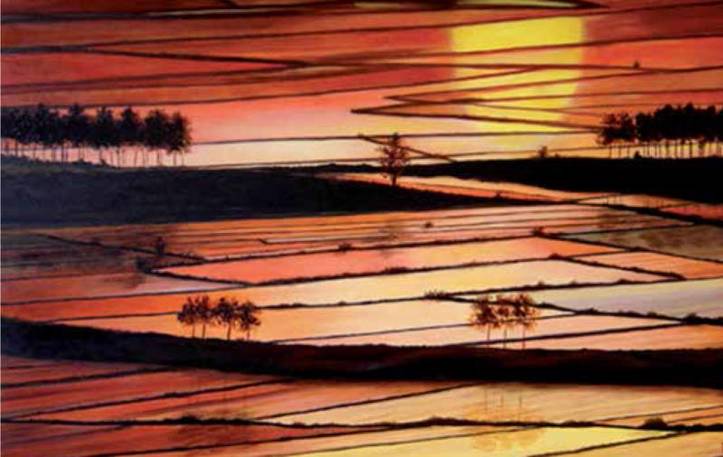


Rice’s story is linked to migration and occupation. Suffice it to think of the influence it has had on the cuisine of Lombardy after the French resided in Milan for ten years and the Spanish almost 200.
From spice to aliment
In Italy rice began to circulate around the 8th century but it was not until 1250 that it appears in bills of sale to the Vercelli Hospital and the House of Savoy, which acquired the foodstuff to prepare Christmas sweets.
The presence of rice in Lombardy was officially recorded by the food tribunal in 1336, when rice was still considered a spice. The history of rice falls into two camps: popular cooking and aristocratic cuisine.
In Lombardy [2] and throughout Northern Italy, it was only with the Sforza and Gonzaga families [3], and in Veneto with the Duke of Ferrara [4], that rice began to be cultivated, especially where rivers were powerful presences: the Adige in Verona, the canals in Milan and all along the Po.
Yet it was still considered a spice. Only in 1500, thanks to a Sienese doctor named Pier Andrea Mattioli [5], does rice throw off that dress and rise to the status of a culinary ingredient. By 1800, Piedmont, Lombardy and Venice were cultivating 900 square miles, and in Romagna the areas around Ravenna and Bologna also contributed to the expansion of rice cultivation.
Crises in the rice industry
In 1869 the Suez Canal was opened, and—then as now— cheaper manufacture in the Far East struck a mortal blow to the western rice industry. The wars and economic crises of 1930s further contributed to a reduction of cultivation. Incredibly, rice cultivation was not resumed in Northern Italy until 1952, during the Korean War (Korea was a major producer of rice and its exportation had declined.) The growth of the European Community and its initial laws did the rest.
Europe’s rice paddy
Today Italy is “Europe’s rice paddy.” With about 850 square miles of rice fields, Italy is hands down the world’s leading producer of fine rice for high- end cuisine. Carnaroli [6], Vialone Nano, Baldo, Roma, Sant’Andrea and Nebbione—which a few producers in Vercelli have started growing again—are all great kinds of rice for risotto [7]. On the other hand, Italian cuisine has never adopted long-grain rice used to prepare side dishes or for parboiled rice.
How rice is produced
Rice is sown in April, cleaned in June (i.e., the paddies are weeded), and harvested in September and October. Once harvested, the rice has a higher moisture content, which is why it is then dried (it cannot legally have a moisture content in excess of 15%). In order to be edible it is hulled and bleached, resulting in a semifinished product. The more it is bleached and ‘cleaned,’ the more the rice loses its nutritive and organoleptic values. In any case, those processes are indispensable for making it edible. Rice is a carbohydrate par excellence and more easily digested than pasta because it contains next to no cellulose. It is highly nutritious and the human body quickly digests its starch. How is rice classified?
That’s a good question. The term “common” refers to rice originally from Japan, indeed it is “common” rice eaten on a daily basis. In reality, around the world rice is categorized exclusively by grain length and not other qualities, like cooking time or nutritive values (for the varieties of rice existing in Italy see table in the next page).
Source URL: http://test.casaitaliananyu.org/magazine/dining-in-out/articles-reviews/article/italia-europes-rice-paddy
Links
[1] http://test.casaitaliananyu.org/files/italiaeuropesricepaddydinoborri1456466122jpg
[2] https://en.wikipedia.org/wiki/Lombardy
[3] https://en.wikipedia.org/wiki/House_of_Gonzaga
[4] https://en.wikipedia.org/wiki/Duke_of_Ferrara_and_of_Modena
[5] https://en.wikipedia.org/wiki/Pietro_Andrea_Mattioli
[6] https://en.wikipedia.org/wiki/Carnaroli
[7] https://en.wikipedia.org/wiki/Risotto